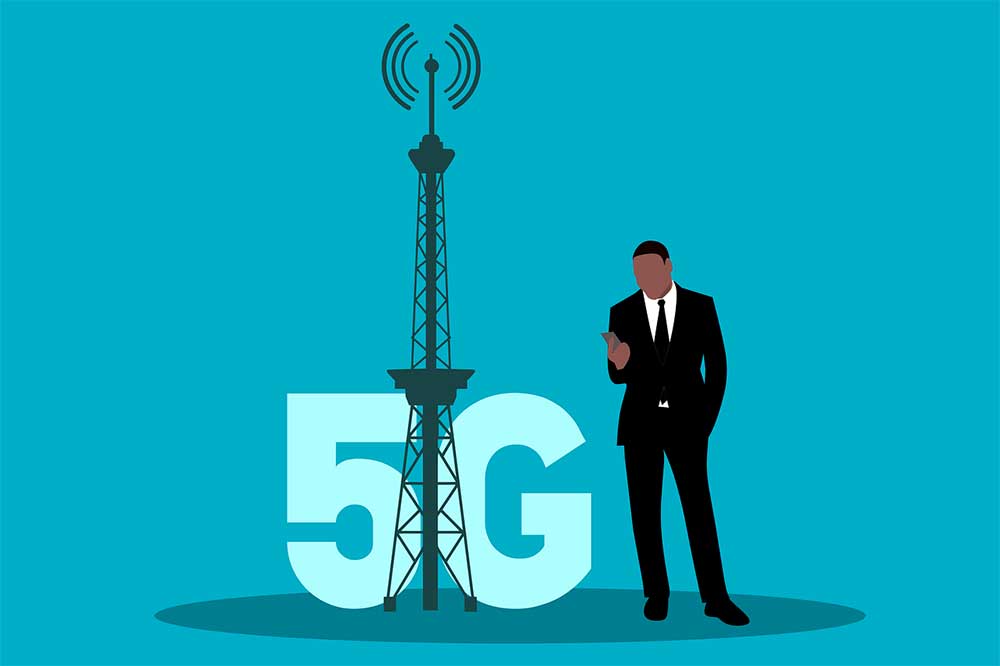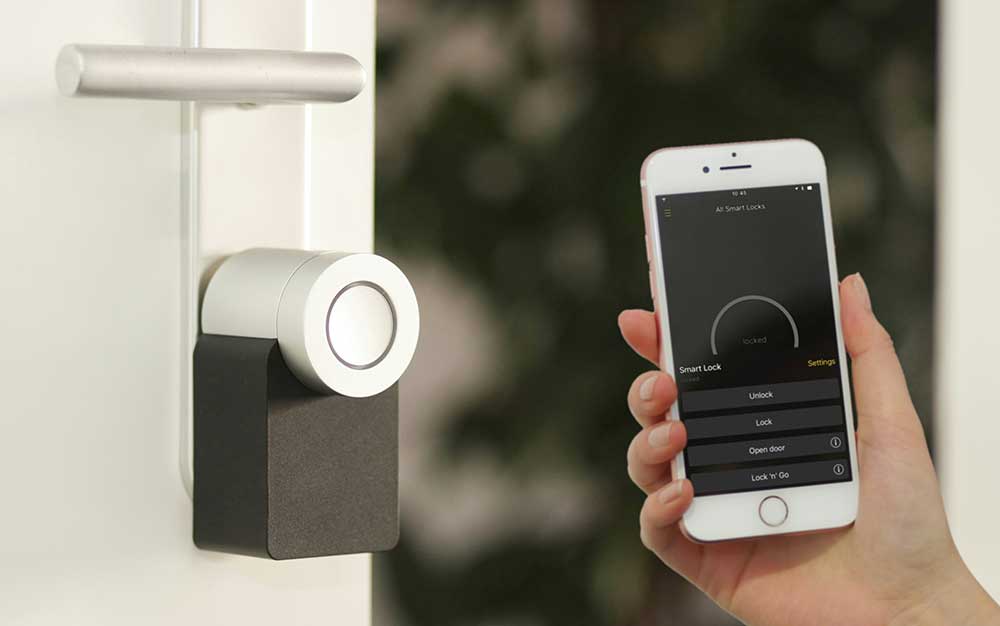
With the widespread uses of cell phones, home monitoring devices, and other smart electronic devices, you heard the terms microwave, radar, and sensor, and even probably know more or less something about them, but what about microwave radar sensor?
If you are an electronics DIY enthusiast, IoT(Internet of Things) developer, or Raspberry Pi fan, you may have fiddled with it through a project of pet monitoring or light activation. As a sensor, how much do you know about it?
In this article, we will delve deeper into microwave radar sensor's features, workings principles, advantages, and applications.
What is Microwave
Microwaves are a type of electromagnetic wave with wavelengths between infrared and radio waves, including millimeter waves and centimeter waves. Their wavelength is typically between 1 millimeter and 1 meter and their frequency is between 300 MHz and 300 GHz.
Thanks to their short wavelength and relatively high energy, microwaves are playing a major role in various applications like close-range communications, radar detection, heating and more.
Microwave features:
- Short wavelength: Microwaves have short wavelengths, usually in the millimeter or centimeter class, and are therefore capable of providing higher frequencies and greater bandwidth.
- High energy: Microwaves have high energy relative to some other lower frequency electromagnetic waves (e.g., radio waves).
- Directionality: Microwaves are usually directional, allowing for more precise directional transmission and reception, which is useful in radar and communications.
- Short-range Transmission: Because of their shorter wavelengths, microwaves are better suited for proximity transmission, allowing data or energy to be transmitted over relatively short distances.
- Wide applications: Microwave technology is used in a wide range of applications such as radar systems, communication technologies (e.g. Wi-Fi, Bluetooth), microwave ovens, and medical imaging devices.
- High Accuracy: The properties of microwaves allow them to provide higher accuracy and resolution in radar and measurement applications.
| Name | Wavelength | Frequency (Hz) |
|---|---|---|
| X-ray | 0.01 nm – 10 nm | 30 EHz – 30 PHz |
| Ultraviolet | 10 nm – 400 nm | 30 PHz – 750 THz |
| Visible light | 400 nm – 700 nm | 750 THz – 400 THz |
| Infrared | 700 nm – 1 mm | 400 THz - 300 GHz |
| Microwave | 1 mm – 1 m | 300 MHz -300 GHz |
| Shortwave Radio | 1 m –100 m | 3 MHz -300 MHz |
| Medium-wave Radio | 100 m - 1000 m | 300 kHz -3 MHz |
| Long-wave Radio | 1 km - 100000 km | 3 Hz -300 kHz |
How does Microwave Radar Sensor work
A microwave radar sensor is a device that utilizes microwave signals to detect physical quantities of an object, such as the presence of object, speed, movement, distance, angle, etc.
The antenna sends out microwaves that are absorbed or reflected when they encounter an object, resulting in a change in power. A receiver receives the reflected microwaves and converts them into electrical signals, which are then processed by the sensor to achieve detection and measurement.
Microwave radar sensing primarily operates in two modes: Continuous Wave (CW) and Frequency Modulated Continuous Wave (FMCW).
- In CW method, the sensor continuously transmits and receives signals (at a fixed transmission frequency). This type is also known as unmodulated continuous wave radar.
- FMCW microwave radar doesn't use a fixed transmission frequency but rather emits a series of frequency-modulated continuous waves. The frequency of the transmitted wave changes over time according to a modulation voltage pattern during the measurement. This changing frequency allows the radar to measure more parameters, including distance, speed, and the presence of objects.
While CW radar sensor is a conventional radar sensing system based on continuous waves, FMCW radar utilizes continuous waves with changing frequencies to achieve more accurate distance and speed measurements. CW radar sensing is used in some basic ranging applications, while FMCW radar is more common in many applications because it provides more information and accuracy.
Microwave radar sensors also can be classified into two types based on the wavelength of the microwaves:
- Millimeter Wave Radar Sensors: Millimeter wave radars use shorter wavelengths, typically ranging from 1 millimeter to 10 millimeters. These radars are often employed in high-precision applications like autonomous vehicles, security scanners, and short-range sensors because millimeter waves provide high-resolution imaging and precise distance measurements.
- Centimeter Wave Radar Sensors: Centimeter wave radars use slightly longer wavelengths, ranging from 1 centimeter to 10 centimeters. These radars find frequent use in collision avoidance systems in automobiles, aviation, and various industrial applications. While they may not have the same resolution as millimeter wave radars, they might excel in coverage range and penetration capabilities.
Microwave Radar Sensors Advantages
The most important difference between microwave radar and conventional radar is the frequency of the electromagnetic waves used. Microwave radar uses high-frequency electromagnetic waves, usually between 30 GHz and 300 GHz, and the wavelengths of these waves are very short, usually between 1 mm and 10 mm, so that microwave radar can achieve higher resolution and accuracy.
- High precision: microwave radar sensors can provide precise measurement data, with high accuracy for detecting the position, speed and size of the target.
- High adaptability: microwave radar can penetrate non-metallic materials like plastic, regular glass, wall panels, and clothing. It and can operate in all-weather conditions from indoor to outdoor spaces, regardless of environmental conditions such as rain, fog, dust snow and high heat settings.
- Low energy consumption: Compared to some other sensing technologies like infrared sensors or laser sensors, microwave radar sensors typically consume less energy and have longer lifespans.
- Diversity of operating frequencies: Microwave radar sensors can operate at different frequencies, millimeter wave and centimeter wave offer more flexible and efficient solutions to different applications.
- Real-time monitoring and feedback: Their ability to monitor targets and provide feedback in real-time is very helpful in scenarios that require fast decision-making.
| Parameters | Microwave Radar Sensing | Infrared Sensing |
|---|---|---|
| Working Principle | Doppler Effect | Heat source like human thermal |
| Sensitivity | High | Moderate |
| Accuracy | High | Poor |
| Detection speed | Excellent | Moderate |
| Sensing distance | Up to hundreds of meters | Tens of meters |
| Angle | Up to 180 degrees | Up to 100 degrees |
| Penetration | Excellent | Moderate |
Microwave Radar Sensor Applications

Smart Home
When it comes to smart home or Internet of Things, human presence and motion sensing is a basic function to realize human-computer interaction. Motion detectors are vital components of any home security system, that's where human presence sensors come into play.
As a common type of microwave radar sensing, aside from alarm systems, human presence sensors also play a critical role in our everyday applications like smart lighting, playing music, smart trash cans, and other smart household appliances.
The human presence sensor uses millimeter wave to detect both human movement and stationary presence. It operates by sensing Doppler parameters related to human motion and physiological indicators in synchronization, enabling wireless monitoring of human presence in a designated area.
The information can be transmitted wirelessly to the gateway or cellphone, making it ideal for residences, hotels, offices, and various other settings.
Automatic Driving
Typically, self-driving cars use a variety of sensors, including cameras, LIDAR, and ultrasonic sensors, to get a full sense of the environment. Microwave radar, as one of these sensors, provides instant and reliable distance measurements, which are critical for real-time environmental sensing and obstacle detection.
As an integral part of ADAS(Advanced Driver Assistance Systems), microwave radar sensors are used to measure the distance, speed and direction of surrounding objects. These radars can detect objects, whether stationary or moving, quickly and accurately. They are able to penetrate some obstacles such as rain, snow, fog or light dust, thus providing reliability in adverse weather conditions.
Interactive Sensing
Interactive sensing refers to the use of various sensing technologies to realize human-computer interaction, including millimeter-wave radar-based gesture recognition technology. Millimeter-wave radar technology has great potential in this regard, being able to capture and interpret user gestures to enable contactless interaction.
The advantage of millimeter wave radar technology lies in its high precision and sensitivity to tiny gestures, enabling a more natural and intuitive interaction experience. With millimeter-wave radar, devices can sense and recognize minute gestures from the human body, allowing users to interact with the device without having to directly touch the screen or physical buttons.
As a short-range noncontact tech, a broad range of applications of this technology can be envisioned, including wearable and mobile interaction, gaming control, smart home electronics, internet of things, augmented reality (AR) and virtual reality (VR), and other exciting applications.
Although this technology is still under constant development and improvement, it has great potential for the future development of human-computer interaction.
Reference: Read on here for full idea of Short-range noncontact sensors.
Related Questions
What are the components of microwave radar sensing?
The design of any radar system generally consists of two aspects:
- Radar hardware, including RF transceiver, baseband circuitry, processing unit, antenna, and so forth.
- Digital signal processing (DSP) to parse the backscattered signal to recover the desired information, namely the sensor.
How do sensors work
A sensor can convert non-electrical physical quantities (like speed, displacement, pressure, temperature, humidity, sound intensity, illumination, etc.) into electrical quantities that are easy to measure, transmit, and process, such as voltage, current, resistance, capacitance, etc.
What is millimeter wave?
Millimeter wave is a type of electromagnetic wave with wavelengths ranging between microwaves and infrared waves, hence possessing characteristics of both spectrums. Its frequency typically ranges between 30 GHz to 300 GHz, corresponding to wavelengths between 1 millimeter(mm) to 10 millimeters.
Is infrared ray an electromagnetic wave?
Yes. Infrared is a type of electromagnetic wave(radiation) with a wavelength longer than visible light but shorter than microwaves, ranging from about 700 nanometers to 1 millimeter.
Infrared radiation is caused by the temperature of an object; the hotter the object, the more IR radiation there is. It is invisible to the human eye but can be detected and utilized using specialized detectors and sensors.
What is the difference between microwave radar sensing and infrared sensing?
Microwave radar uses high-frequency electromagnetic waves, typically in the millimeter-wave range. It emits and receives microwave signals, analyzing changes in these signals to detect target objects. It's suitable for detecting both moving and stationary objects. Due to its ability to penetrate certain barriers like thin walls or clothing, it works well in applications requiring detection across obstacles.
Infrared sensors are primarily used to detect infrared radiation by collecting the infrared light typically emitted by heat sources such as humans or animals. When an object enters the sensor's detection scope, it detects changes in the infrared signal. Infrared sensors have a more limited detection range for nearby heat sources like the human body. They typically don't penetrate objects but are sensitive to detecting heat sources at close proximity.
What are the main differences between radio waves and microwaves?
Radio waves are electromagnetic waves, a low-frequency, low-energy form of electromagnetic radiation, and microwaves are high-frequency, high-energy waves. Radio waves are omnidirectional traveling through space modes, while microwaves are more directional using line-of-sight propagation.
Radio waves can travel over long distances great for long-distance transmission and communication, whereas microwaves cover shorter distances ideal for short-range communication, radar detection, and heating applications.

 Comments
Comments